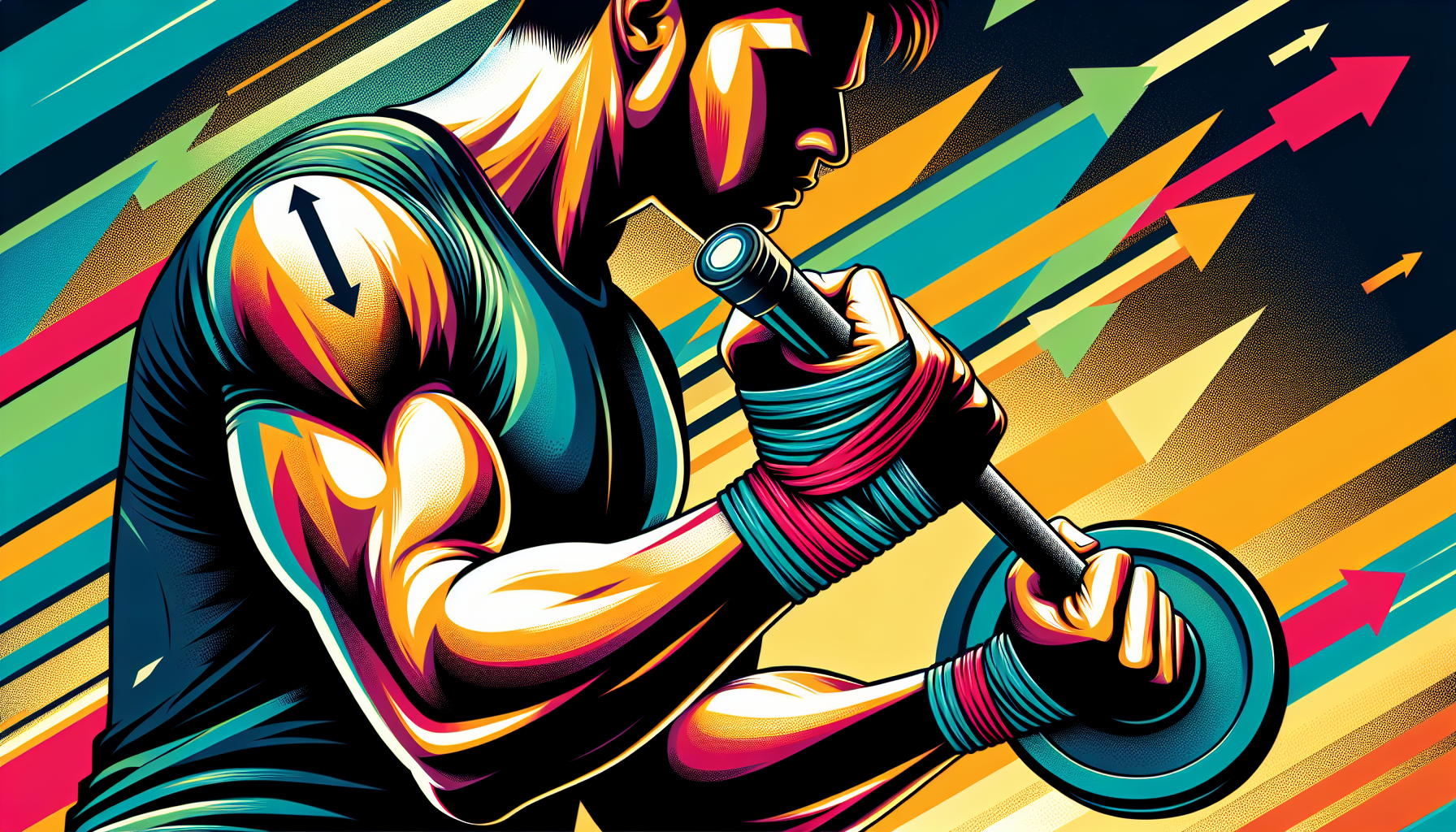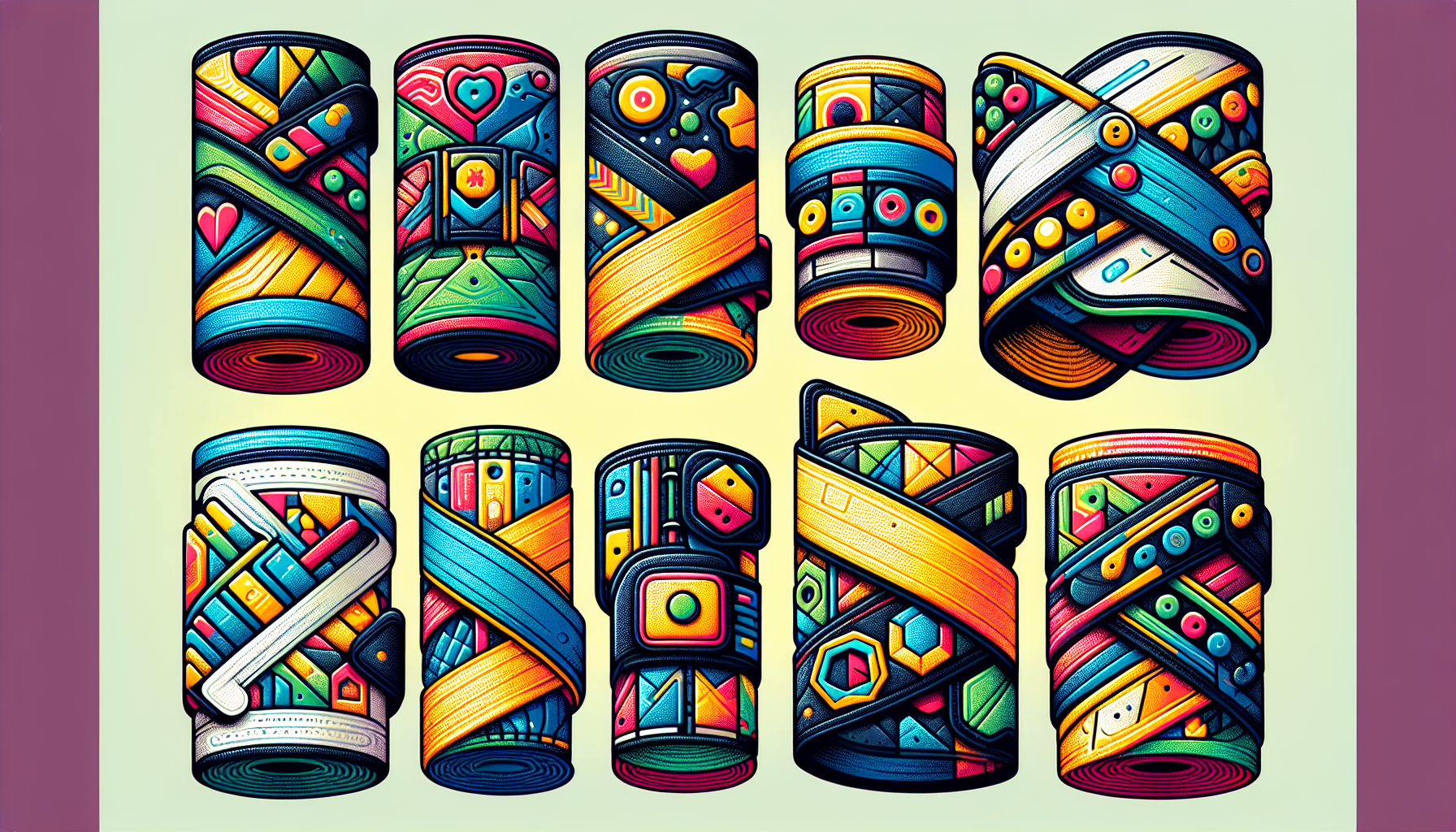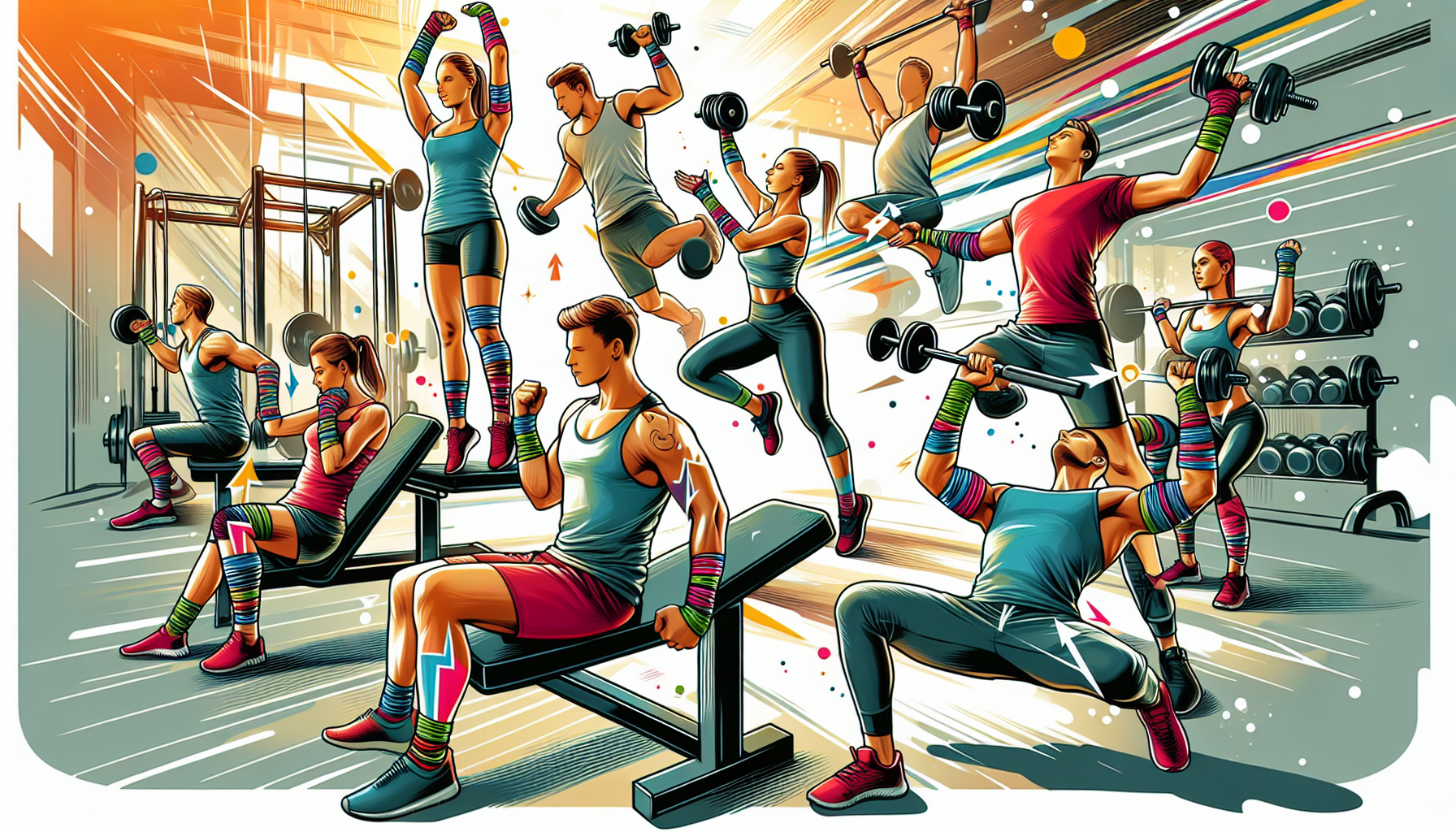Do wrist wraps help with wrist pain during strength training? If you’re dealing with wrist pain while lifting weights, you’re probably wondering if wrist wraps can provide relief.
In this article, we’ll explore whether wrist wraps can reduce pain, how they work, and the benefits they offer for your strength training routine.
Key Takeaways
-
Wrist wraps provide essential support during strength training by stabilizing the wrist, reducing strain, and preventing injuries.
-
Wearing wrist wraps can alleviate wrist discomfort and increase lifting capacity, allowing for greater performance and heavier lifts.
-
There are various types of wrist wraps available, each offering different levels of support, with proper technique being vital for maximum benefit.
Understanding Wrist Pain in Strength Training
Wrist pain during strength training can be a real hindrance, but understanding its causes is the first step to addressing it. When you lift heavy weights or perform repetitive motions, substantial stress is placed on the wrist. This stress can lead to pain and discomfort, making it difficult to continue training effectively.
The wrist joint is among the most intricate joints in your body, consisting of eight small bones that allow for multidirectional movement. This complexity also makes it prone to wrist injury, especially during intense workouts. Common wrist injuries include ligament strains, particularly on the back and sides of the wrist.
Without proper support, the strain on your wrist joint can lead to chronic pain and even long-term damage. This is where wrist wraps come into play, providing the necessary support to prevent these injuries and allow you to train with confidence.
How Wrist Wraps Provide Support

Wrist wraps work by maintaining proper alignment of the wrist, which minimizes the risk of hyperextension and other injuries, including excessive wrist extension. When you wear wrist wraps and wrist straps, they help keep your wrist in a neutral position, significantly reducing strain during weight lifting.
These wraps are designed to improve stability by reducing the movement of the wrist joint. By limiting wrist motion, wrist wraps reduce the load on your forearm muscles during heavy lifts, which can prevent fatigue and enhance your performance. They also help in maintaining a neutral wrist position, which is crucial for safe and effective lifting.
Moreover, wrist wraps can lead to improved lifting performance by providing the necessary wrist support. This support not only prevents injuries but also allows you to lift heavier weights with greater ease. By providing a stable base, wrist wraps enable you to focus on your lifts without worrying about wrist pain or instability.
Benefits of Wearing Wrist Wraps

Wearing wrist wraps during your workouts can offer numerous benefits, enhancing both your performance and safety. From providing wrist support to preventing injuries, wrist wraps can be an essential part of your strength training arsenal.
The benefits of wrist wraps can be broadly categorized into three main areas: enhanced wrist stability, alleviation of wrist pain, and increased lifting capacity. Let’s delve into each of these benefits to understand how wrist wraps can make a significant difference in your training.
Enhanced Wrist Stability
The primary function of wrist wraps is to stabilize the wrist joint, which is crucial for preventing injuries during lifting. Wrist wraps maintain stability by keeping the wrists in a neutral position, reducing the risk of strains and injuries. Maintaining this stable position is crucial for lifting heavy weights safely.
Wrist wraps decrease the ability of the load to move or bend the wrist, effectively reducing wrist movement during lifting. Restricting wrist motion ensures joint stability throughout the lift, providing vital support. This stability is especially important during heavy lifts where the risk of injury is higher.
Wrist wraps enhance wrist stability by maintaining a secure, neutral position. This reduces the risk to prevent wrist injuries and allows you to focus on your performance without worrying about wrist pain or instability.
Alleviation of Wrist Pain
Wrist wraps alleviate wrist discomfort during workouts by preventing the exhaustion of smaller muscles, which can lead to pain.
Although wrist wraps are effective at preventing pain, they are not a miracle cure. Wrist positioning exercises can also alleviate wrist pain. These exercises help in maintaining wrist mobility and strength, ensuring that the wrist joints remain healthy.
Wrist wraps should not be solely relied upon for injury treatment. Consult a doctor or hand therapist for proper diagnosis and treatment if you experience significant wrist pain.
Increased Lifting Capacity
One of the significant benefits of wrist wraps is their ability to increase your lifting capacity. Wrist wraps allow you to lift heavier weights by redistributing the load away from the palm, making it easier to manage. This redistribution helps in maintaining a better grip during lifts, preventing the hand from opening due to forearm muscle fatigue.
Additionally, wrist wraps increase the activation of wrist extensor muscles, enhancing overall performance in lifting weights. This increased muscle activation can lead to better lifting performance and the ability to handle heavier weights.
Providing essential support, wrist wraps significantly increase your lifting capacity, allowing you to build muscle and strength more effectively. Reducing strain and enhancing grip strength, wrist wraps make lifting heavy weights more manageable.
Types of Wrist Wraps and Their Uses

There are three main types of wrist wraps: nylon, cotton, and leather, each providing different levels of support. Nylon wrist wraps are popular for their comfort and adjustable fit, making them suitable for a variety of exercises. These wraps are often fastened with Velcro, providing a secure fit.
Cotton wraps are more flexible, allowing for better mobility during workouts but offer less support than nylon or leather. They are ideal for longer workouts as they can be worn comfortably without needing frequent adjustments. Cotton wraps typically use a string fastening system.
Leather wrist wraps provide maximum support but are less comfortable and flexible, making them suitable for advanced lifters who require a cast-like effect to minimize wrist movement during heavy lifts. These wraps are best for heavy lifting, providing the highest level of support and stability.
Exercises That Benefit from Wrist Wraps

Wrist wraps are particularly beneficial for strength training exercises by providing extra support to the wrists. For example, bench presses benefit greatly from wrist wraps as they provide stability and reduce wrist strain during the lift.
Overhead presses also see significant benefits from wrist wraps, allowing for better control and reduced discomfort during the lift. The added support helps maintain a proper wrist position, preventing injuries and enhancing performance.
Chin-ups and pull-ups are other exercises that benefit from the support provided by wrist wraps. They enhance grip and stability during the movement, allowing for better performance and reducing the risk of wrist injuries.
Proper Technique for Using Wrist Wraps
Using wrist wraps correctly is crucial to ensure they provide the maximum benefit. Start by aligning the thumb loop of the wrist wrap with the base of your thumb before wrapping to ensure a proper fit and support. Begin by wrapping the wrist with the thumb loop positioned appropriately to ensure stability throughout the lift.
Secure wrist wraps by wrapping them from the base of the wrist towards the hand, ensuring they are snug but not overly tight to avoid restricting blood flow. Overlap the material to cover the entire wrist area while maintaining consistent tension.
Secure the end of the wrist wrap with Velcro or another fastening mechanism, ensuring it is locked in place. This ensures that the wrist wrap remains in position during your lifts, providing continuous support.
Potential Downsides of Over-Reliance on Wrist Wraps
While wrist wraps are incredibly beneficial, over-reliance on them can lead to dependency, which may hinder the development of natural grip strength. It’s important to still focus on building grip strength without wrist wraps, particularly during lighter movements.
Enhance wrist strength by implementing targeted wrist exercises when not wearing wrist wraps. These exercises help in maintaining wrist mobility and strength, ensuring that your wrists remain healthy and strong.
While wrist wraps help in recovering from injuries by alleviating pain and restoring strength, it’s crucial to maintain wrist mobility and strength through specific exercises. Balancing wrist wrap use with wrist-strengthening exercises ensures optimal wrist health.
Summary
In summary, wrist wraps offer significant benefits for those engaging in strength training. They provide essential wrist support, enhance stability, alleviate wrist pain, and increase lifting capacity. Choosing the right type of wrist wrap and using them correctly can make a substantial difference in your training performance.
However, it’s important to use wrist wraps wisely and not become overly reliant on them. Balancing their use with exercises that strengthen the wrist naturally will ensure long-term wrist health. Embrace wrist wraps as a tool to enhance your workouts and lift with confidence.
Frequently Asked Questions
What are wrist wraps, and how do they help with wrist pain?
Wrist wraps are supportive bands that help maintain proper wrist alignment, reducing strain and preventing hyperextension, thereby alleviating wrist pain.
Can wrist wraps prevent wrist injuries during heavy lifting?
Wrist wraps can indeed prevent wrist injuries during heavy lifting by offering stability, support, and maintaining a neutral wrist position, which reduces excessive motion. Using them can be a proactive measure for injury prevention.
What types of wrist wraps are available, and which should I choose?
You should choose between nylon, cotton, and leather wrist wraps based on your needs: nylon for comfort and adjustability, cotton for flexibility, and leather for maximum support. Each type serves a distinct purpose, so select the one that best matches your activity level and requirements.
Are there any exercises that particularly benefit from using wrist wraps?
Wrist wraps significantly enhance support and stability during exercises such as bench presses, overhead presses, chin-ups, and pull-ups. Utilizing them can improve your performance and reduce the risk of injury.
Can over-reliance on wrist wraps be harmful?
Yes, over-reliance on wrist wraps can hinder your natural grip strength development and lead to dependency. It's essential to balance their use with exercises focused on strengthening your wrists.

